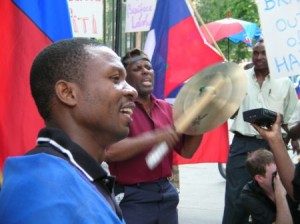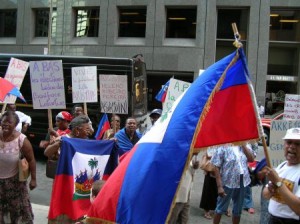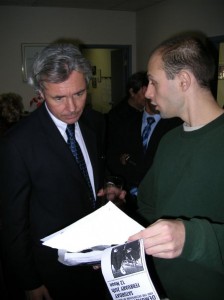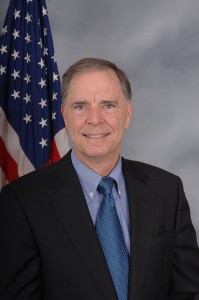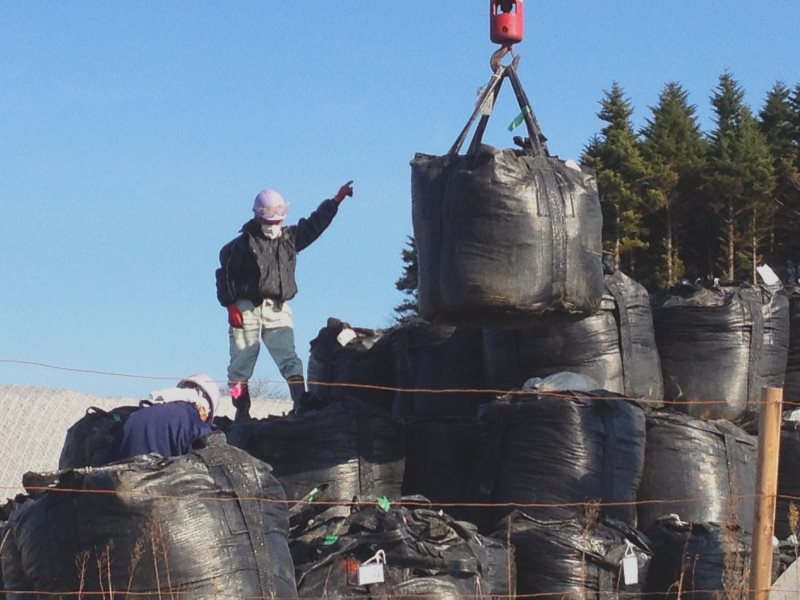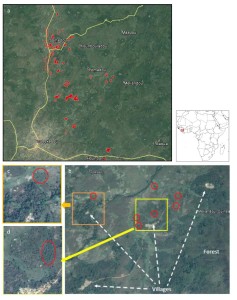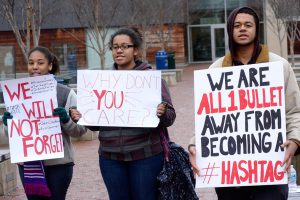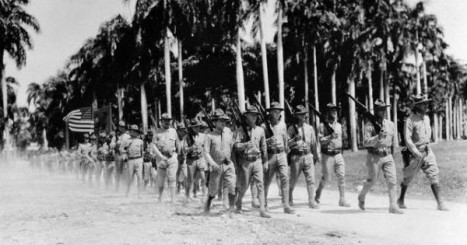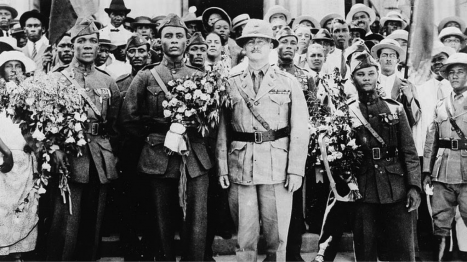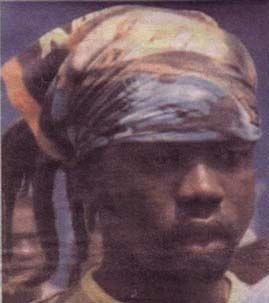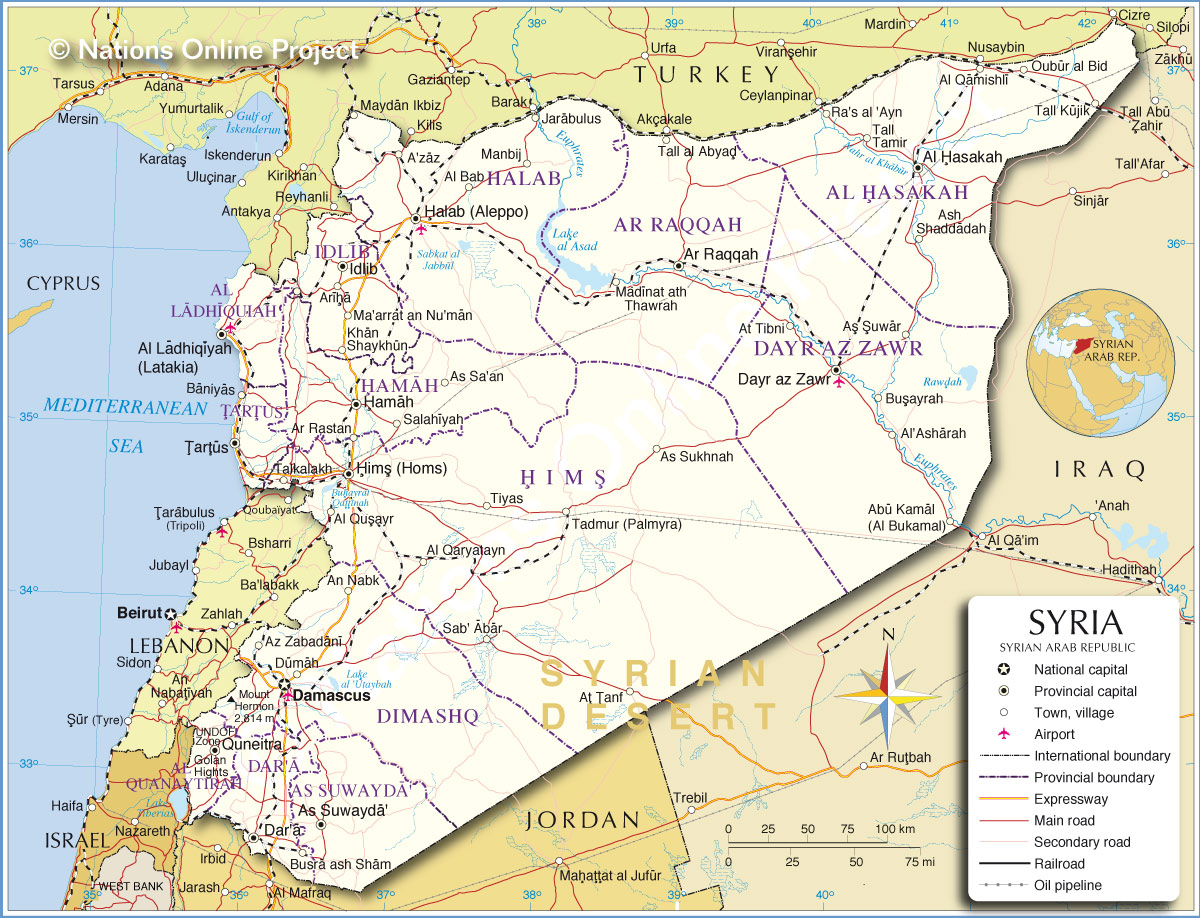Image: Three girls at a juvenile facility in Racine, Wisconsin. Richard Ross
How did we end up with millions behind bars and police armed like soldiers?
How did we get here? The numbers are chilling: 2.2 million people behind bars, another 4.7 million on parole or probation. Even small-town cops are armed like soldiers, with a thoroughly militarized southern border.
The common leftist explanation for this is “the prison-industrial complex,” suggesting that the buildup is largely privatized and has been driven by parasitic corporate lobbying. But the facts don’t support an economistic explanation. Private prisons only control 8 percent of prison beds. Nor do for-profit corporations use much prison labor. Nor even are guards’ unions, though strong in a few important states, driving the buildup.
The vast majority of the American police state remains firmly within the public sector. But this does not mean the criminal justice buildup has nothing to do with capitalism. At its heart, the new American repression is very much about the restoration and maintenance of ruling class power.
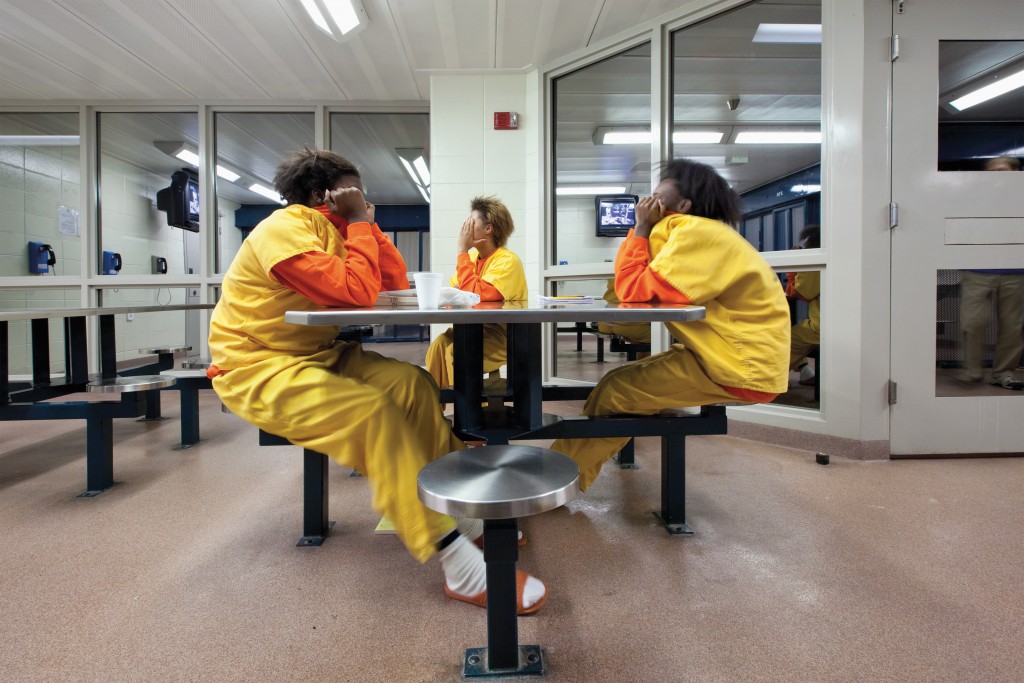
American society and economy have from the start evolved through forms of racialized violence, but criminal justice was not always so politically central. For the better part of a century after the end ofReconstruction in the 1870s, the national incarceration rate hovered at around 100 to 110 per 100,000. But then, in the early 1970s, the incarceration rate began a precipitous and continual climb upward.
The great criminal justice expansion began as a federal government reaction to the society-wide rebellion of the late 1960s. It was a crucible in which white supremacy, corporate power, capitalism, and the legitimacy of the US government, at home and abroad, all faced profound crisis. The Civil Rights Movement had transmogrified into the Black Power movement.
“Third World” Marxist and nationalist groups like the Black Panthers and the Young Lords began arming. During riots in Newark, Watts, and Chicago, black people shot back at cops and the National Guard; in Detroit, urban “hillbillies” — poor white Southerners who had also been displaced by the mechanization of agriculture — fought alongside their black neighbors. Transwomen, drag queens, and gay men fought the cops who came to raid the Stonewall Inn in Greenwich Village. Women organized, filed successful lawsuits, and staged large protests against discrimination.
Even the US Army was in rebellion. In Vietnam draftee insubordination took the form of increasing drug use, combat refusals, and even “fragging” — the murder of overly gung-ho officers.
Added to all this was the increasingly regular rioting that gripped America’s inner cities. Every summer from 1964 through the mid-1970s saw a riot season, in which multiple major American cities were wracked by massive, violent, fiery, spontaneous uprisings of mostly, but not exclusively, unemployed and underemployed African-American youth. Cops were shot, whole commercial districts were looted and burnt, and all of it was captured on TV.
Importantly, these domestic social explosions hurt US imperialism abroad. In the context of the Cold War, burning cities put the lie to official American mythologies. If capitalism and liberal democracy were so much better than socialism, why were black people in America so furious?
In 1967 the National Advisory Commission on Civil Disorders, known as the Kerner Commission, found that in every single case the precipitating cause of the riots was police brutality. Furthermore, the commission found that police tactical incompetence usually made things worse.
It was in response to this panorama of formal and informal rebellion — and law enforcement’s apparent inability to stop it — that the massive criminal justice crackdown began. The opening move was President Johnson’s Omnibus Crime and Safe Streets Act of 1968.
Congress passed the bill literally in the shadow of smoke from yet another riot — this one in outrage at the murder of Dr Martin Luther King. From the passage of the Omnibus Crime and Safe Streets Act of 1968 emerged a new super agency, the Law Enforcement Assistance Administration (LEAA), which over the next ten years spent a billion dollars annually rationalizing and retooling state and local law enforcement.
It was thanks to the LEAA that American police forces first obtained computers, helicopters, body armor, military-grade weapons, SWAT teams, shoulder radios, and paramilitary training, and started new militaristic forms of interagency cooperation. The LEAA also pushed literacy requirements and basic competency tests for police officers. In other words, the LEAA was simultaneously an attempt to modernize American policing and to intensify and expand it.
If Johnson laid the groundwork for the crackdown, Sunbelt Republicans perfected the rhetoric. Sen. Barry Goldwater of Arizona linked the redistributive efforts of the New Deal and War on Poverty to criminal violence: “If it is entirely proper for the government to take away from some to give to others, then won’t some be led to believe that they can rightfully take from anyone who has more than they? No wonder law and order has broken down, mob violence has engulfed great American cities, and our wives feel unsafe in the streets.”
Here were the old demonizing tropes of white racism. Black people were cast as dangerous, ignorant, unworthy of full citizenship, and thus in need of state repression. As Nixon’s chief of staff, H.R. Haldeman, put it in his diary: “[The President] emphasized that you have to face that the whole problem is really the blacks. The key is to devise a system that recognizes this while not appearing to.” A federal war on heroin followed and with it came new laws like the RICO Actthat empowered prosecutors. At the same time Nixon began his appeal to “the silent majority,” a group not named as white but understood as such.
Meanwhile, as part of police modernization, counterinsurgency became the framework. One law enforcement journal, describing what would become the locked-down ghetto of the near future, advised: “Techniques to control the people include individual and family identification, curfews, travel permits, static and mobile checkpoint operations, and the prevention of assemblies or rallies.”
The article went on to describe rising crime rates as a precursor to revolution, and lauded the “value of an effective police organization — both civil and military — in maintaining law and order, whether in California, Pennsylvania, Mississippi, or the rice paddies and jungles of Viet-Nam.”
Upward Redistribution
Eventually this first phase of the criminal justice buildup began to plateau. By the late seventies, a series of major scandals had revealed the nasty side of policing and government spying. First among these was the Nixon administration’s burglary of Democratic Party headquarters in the Watergate Hotel. Then the Knapp Commission hearings exposed the New York Police Department’s appalling corruption, while the Senate’s Church Committee revealed rampant domestic spying and began reining in the CIA.
From other quarters came revelations about the brutality in Southern prisons. Many lockups in the US South relied on armed trustees, prisoners who acted as guards and were given free rein to abuse fellow inmates. Texas was the last state to abolish the armed trustee system in the early 1980s. All of this caused a momentary pause in the otherwise forward momentum of the repressive buildup.
That pause was short-lived. The Reagan Administration soon relaunched the federally subsidized drug war and the larger project of domestic repression it helped produce.
However, this second stage of the buildup was not about suppressing rebellion; that job was largely done. There were no more riots; the Panthers had been crushed; and many once-radical community organizations had been domesticated, their rank-and-file members demobilized, their leaders reduced to begging for foundation grants.
The Reagan Revolution’s radical economic restructuring had, however, created new problems to which criminal justice offered solutions. Reagan’s massive upward redistribution of wealth had created vast swaths of impoverishment and dramatic new levels of inequality. In this context the reinvigorated war on crime served to physically contain and ideologically explain away, via racist victim-blaming, the massive social dislocations of neoliberal, free-market economic restructuring.
So then, why and how did economic policy move radically rightward in the early 1980s?
Sabotage, at Home and Abroad
This transformation, the beginning of neoliberalism, begins with the crucially important collapse of profit rates in the early 1970s. After twenty years of continual expansion during the long postwar recovery, profits began to sag in 1966 and continued to decline steadily until 1974, when they reached an average of around 4.5 percent. The same pattern of a 20 to 30 percent plunge in profits was true across all advanced capitalist countries.
This was, ultimately, a crisis of over-accumulation rooted in the end of the postwar boom. By the late sixties, the long wave of post–World War II growth had created a global glut. There was finally too much capital, too much stuff, and not enough profitable outlets for investment, not enough consumption to keep the colossus moving.
For the first time in American history the Phillips curve, which plotted an inverse relationship between rising wages and rising unemployment, was out of whack. Historically, when unemployment increased wages tended to go down. But in the early 1970s, both unemployment and wages were increasing. This was the infamous and anomalous “stagflation” — stagnant growth plus inflation.
While the cause of the crisis was overproduction at a global scale, the solution, in the eyes of the ruling class, was cost-cutting in the form of deregulation, tax cuts, and reduced wages.
From the New Deal, through the War on Poverty, and into the Nixon era, the state had played an increasingly prominent role in the economy. Between 1964 and 1979 the federal government enacted sixty-two health and safety laws, plus thirty-two laws protecting the environment and regulating energy use. Between 1970 and 1973, Nixon presided over the creation of the Environmental Protection Agency, the Occupational Safety and Health Administration, the Consumer Safety Administration, and the Mine Enforcement and Safety Administration.
All this translated into higher costs and thus lower profits for business. High taxes and restrictive regulation, once seen as merely the modern cost of business, where now seen as profit killers.
To make matters worse, the 1970s saw a truly massive offensive by organized labor. Truckers, farmworkers, longshore workers, gravediggers, postal clerks and letter carriers, autoworkers, and assembly line workers of all sorts struck during the 1970s.
And they usually won. The ratio of quits to layoffs reached two to one, almost twice what it was in the late fifties. The share of the workforce involved in some strike activity between 1967 and 1973 reached 40 percent — even though in the same period the unemployment rate crept from 4 to 8 percent.
Restive workers also resorted to informal rebellion on the shop floor. Ford claimed that absenteeism in its plants doubled and sometimes even tripled during the sixties and early seventies. In one factory workers wrote messages to management on their machinery, such as, “Treat me with respect and I will give you top quality with less effort.” Sabotage, slowdowns, and wildcat strikes became the industrial equivalents of “fragging” officers in Vietnam.
One account relays the plight of a Ford manager in a plant plagued with absenteeism and sabotage. Among the plant’s employees was a young man who consistently skipped work on Friday or Monday. When the manager finally demanded to know why the man worked a four-day week, the young worker replied, “Because I can’t make a living working three days a week.”
He spoke for a generation; working-class power translated into an informal, economy-wide slowdown, which meant a measured decline in productivity.
Even more disturbing from the point of view of the capitalists was that government, or at least its recently expanded social safety net, was actually subsidizing the working-class rebellion.
A nationwide strike against GE in 1969 helped crystallize the issue. Strikers were not only receiving strike funds from their union — tens of thousands of them were also drawing welfare checks.
“It’s a mind-boggling situation,” declared Thomas Litwiler, a GE executive in Pittsfield, Massachusetts. “The strikers are living reasonably well on welfare, and nobody knows what to do or what it really means any more.”
Working-class power was being institutionalized within the state, and the state in turn was being transformed. But from the point of view of employers, welfare for strikers meant government-subsidized class war.
The Cold Bath Recession
The solution, for business, arrived in the form of what Francis Fox Piven called The New Class War. Restoring the Phillips curve and getting the price of labor to respond to rising unemployment meant stripping away the supports of the safety net produced by America’s New Deal and Great Society.
The counterattack began in 1979, when President Jimmy Carter appointed Paul Volcker as chairman of the Federal Reserve Board. Volcker dramatically boosted interest rates, thus cutting off borrowing and buying power. Reagan accelerated this “monetarist” squeeze, and interest rates reached 16.4 percent in 1981. The United States (and thus much of the world) was plunged into what was then the most severe recession since the thirties.
Referred to as a “cold bath” recession, it was designed to punish the uppity working class. As Volcker told the New York Times: “The standard of living of the average American has to decline . . . I don’t think you can escape that.”
At the same time Reagan cut taxes for the rich and began gutting welfare, he pushed forward on deregulating health, safety, and environmental standards. In 1982 alone Reagan cut the real value of welfare by 24 percent, slashed the budget for child nutrition by 34 percent, reduced funding for school milk programs by 78 percent, trimmed urban development action grants by 35 percent, and cut educational block grants by 38 percent.
The medicine worked. Poverty increased and with that labor militancy and the cost of wages decreased. From World War II on, wages had been rising more or less consistently.
In 1980 not a single new union contract included a pay cut, or even a freeze. But in 1982, only one year into the Reagan Revolution, 44 percent of new contracts included wage cuts or freezes. As the official unemployment rate, always an under-estimate, reached 10 percent, working-class living standards began to collapse.
Alan Budd, chief economic adviser to Margaret Thatcher, described the new economic dynamic as follows: “Rising unemployment was a very desirable way of reducing the strength of the working classes . . . What was engineered — in Marxist terms — was a crisis in capitalism which re-created a reserve army of labor, and has allowed the capitalists to make high profits ever since.”
How was this new social landscape of deindustrialization and increased poverty next to new extremes of wealth to be managed and explained away? Reengaging the criminal justice buildup provided the answer.
Launching the Drug War
Reagan’s criminal justice offensive began quietly at first. His administration doubled FBI funding, loosened wiretap laws, gave more money to the US Bureau of Prisons, appointed a generation of new right-wing federal judges, and urged changes in the criminal code that increased the power of prosecutors. Meanwhile, the Supreme Court handed down decisions that rolled back defendant rights. Gates v. Illinois made it easier for police to obtain search warrants based on anonymous tips; United States v. Leon allowed police to use defective and partially false warrants.
Then came the Federal Crime Bill of 1984, which created the assets forfeiture laws enabling police to keep as much as 90 percent of any “drug-tainted” property seized. This massively incentivized state and local officials to get on board with the drug war.
Next came the Anti-Drug Abuse Act of 1986, which imposed twenty-nine new mandatory minimum sentences, among them the notoriously racist disparity between crack and powder cocaine sentencing.
The escalating repression hit poor people of color hardest, and black people hardest of all. In 1980, African Americans made up 12 percent of the nation’s population and over 23 percent of all those arrested on drug charges. Ten years later, African Americans were still 12 percent of the population, but made up more than 40 percent of all those arrested on narcotics charges. Still more remarkable, over 60 percent of all narcotics convictions were of African Americans.
Overall, drug arrests almost doubled in the late eighties: 1985 saw roughly 800,000 people taken down on drug charges; by 1989 that number had shot up to almost 1.4 million.
By the late eighties, politicians and the media were locked in a symbiotic hysteria, a classic mutually reinforcing “moral panic.” The zenith of this was the Hill & Knowlton–produced TV ads featuring the scowling mug shot of a black convict named Willie Horton, imprisoned for rape and murder. Horton escaped prison while Michael Dukakis was governor of Massachusetts.
During this time the 1988 crime bill was introduced, which created a “drug czar” — cheerleader-in-chief for the drug war — and pumped yet more federal money down to local police and state prison construction. The bill also created a “one-strike” policy for public housing tenants.
The Clinton presidency brought more of the same. After the Los Angeles riots came the 1994 Violent Crime Control and Law Enforcement Act. Local cops got another $30.2 billion in federal cash. (It is worth recalling that no matter how much the Clinton’s play up their supposed solidarity with African Americans, Bill Clinton’s actual presidency was tyrannical in the extreme for millions of poor and working-class black people caught up in his law-and-order agenda.)
Two years later, with another election on the way, Clinton signed the Anti-Terrorism and Effective Death Penalty Act, massively expanding the use of the death penalty and eviscerating federal habeas corpus. Right behind that came the Prison Litigation Reform Act, which barred many prisoners from access to the civil courts, helped eliminate prison law libraries, kept judges from imposing meaningful penalties on abusive prison administrators, and stripped lawyers of their ability to receive legal fees when handling prison civil rights suits.
In election year 1996 Clinton, on a roll of utter brutality and right-wing pandering, delivered the Illegal Immigration Reform and Immigrant Responsibility Act, which among other things eliminated an undocumented person’s right to due process while lavishing cash on the Immigration and Naturalization Service.
Throughout the eighties and nineties, state legislatures imitated and matched cues coming from the federal government. California alone made over a thousand changes to its criminal code during these years.
Regulate, Absorb, Terrorize, Disorganize
Looking back we can see clearly the effects of this generalized project of repression: mask the real causes of poverty with racist fearmongering and victim-blaming. Keep once-rebellious communities in America’s cities fragmented and tied up in the criminal justice system. Secure central cities for gentrification and redevelopment. Keep labor cheap by hounding immigrants. And, in a pork-barrel strategy, build new local support via publicly funded prison construction, service contracts, and employment as guards.
In other words, among the important things criminal justice does is regulate, absorb, terrorize, and disorganize the poor. At the same time it promulgates politically useful racism. Criminal justice discourse is the racism circus; from courts to reality TV it is the primary ideological site for producing the false consciousness that is American racism.
Why is racism false consciousness? Because it divides the working class and causes people of all races to misunderstand their real material conditions. It creates, via racialized scapegoats, pseudo-explanations for poverty and exploitation, deluding and frightening downwardly mobile voters.
Most important, the criminal justice crackdown and overuse of incarceration allows capitalism to have the positive effects of mass unemployment (lower wages due to an economically frightened workforce) without the political destabilization that mass poverty can bring. Unlike a robust social safety net, incarceration and militarized policing absorb the poor and working class without empowering them or subsidizing their rebellion, as was the case during the sixties and seventies.
Unlike the soft forms of social control — meaning the ameliorative and redistributive welfare programs of the Great Society — the new model of social control does not come with dangerous notions of “equality” and “social inclusion.”
Today, the poor are thoroughly locked down, as is our political imagination about what poverty means. Law enforcement has moved to the center of domestic politics; state violence is perhaps more than ever a constant, regular, and normal feature of poor people’s lives.
Simply stated, capitalism needs poverty and creates poverty, but is simultaneously always threatened by poverty. The poor keep wages down, but they also create trouble in three ways.
First, their presence calls into question capitalism’s moral claims (the system can’t work for “everyone” when beggars are in the street). Second, the poor threaten and menace the moneyed classes aesthetically and personally simply by being in the wrong spaces. Gourmet dining isn’t quite the same when done in the presence of mendicant paupers. And finally, the poor threaten to rebel in organized and unorganized ways as they did in the sixties and seventies.
Capitalism will never escape these contradictions. The best it can do is manage them with criminal justice, the ideological racialization of poverty, and the geographic segregation of the poor.
One more point. When viewing this history and the present, it is important to think in terms of concomitant and overlapping agendas. Police on the street are not usually consciously pursuing the violent reproduction of neoliberal capitalism. More often local cops in Staten Island; Albuquerque; Ferguson; Waller, Texas; etc. are pursuing their own personal power trips, which very often take on racist angles.
But regardless of what cops think they are doing, their work usually also fits into local political agendas of segregation and real-estate development. And both of those smaller projects fit into the larger national project of social control in an increasingly unequal class society. In other words, the macro, mezzo, and micro levels all line up but also all remain somewhat autonomous.
Finally some good news. Incarceration rates have begun to plateau again, and there are growing divisions among economic and policy elites about the nation’s grotesquely overgrown justice system. California, under court order, has released more than forty thousand prisoners in recent years. This indicates an opening that movements like Black Lives Matter can exploit to force through meaningful policy changes.
And what is our side’s policy prescription? Less. Not better, just less. Fewer prisons, fewer SWAT teams, less surveillance. Not better-trained cops with body cameras, but rather less gear, less money, and fewer cops.
This article draws on Christian Parenti’s book Lockdown America: Police and Prisons in the Age of Crisis.






